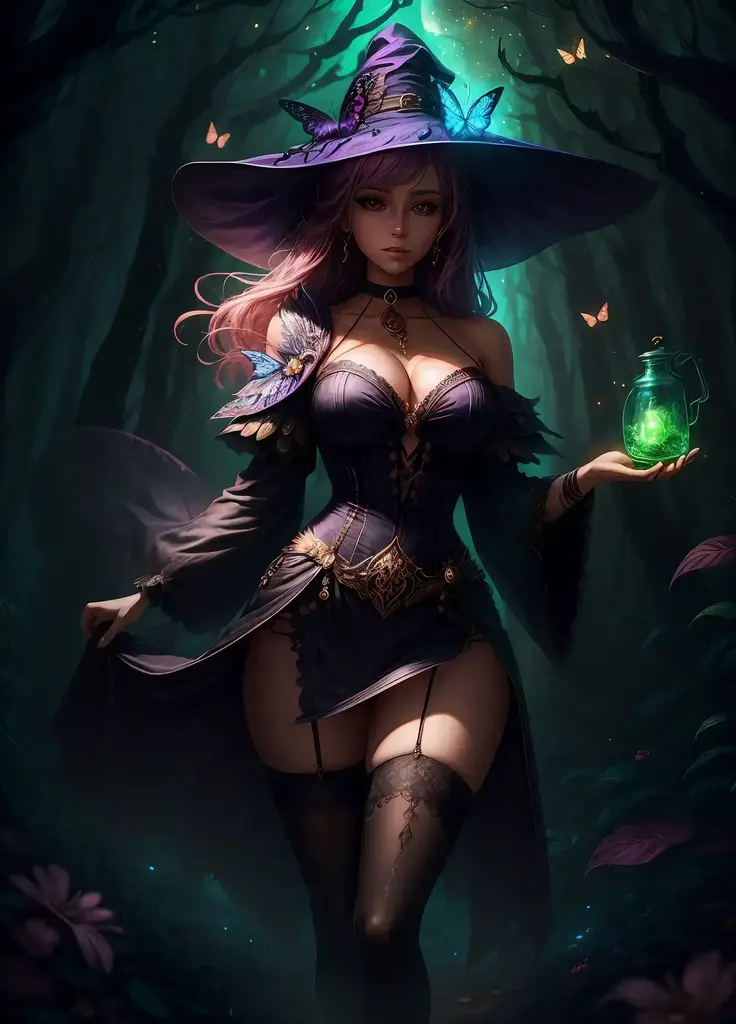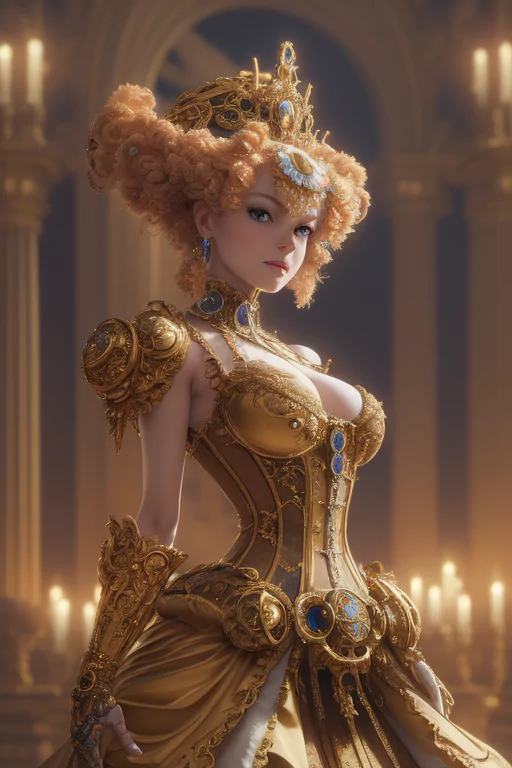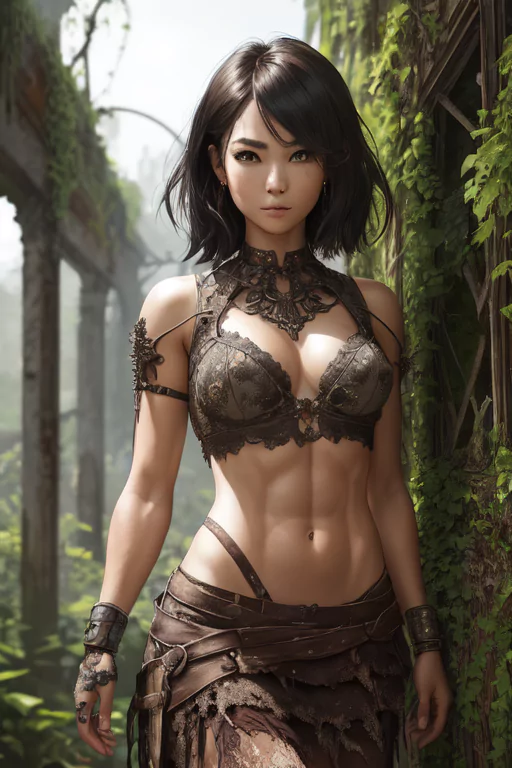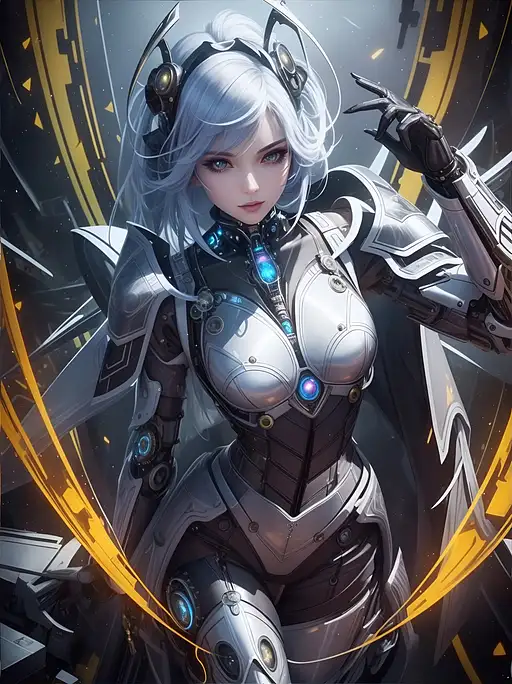This Is A Collection of Midjourney Art Styles Prompts
**Please note this post is updated often. Images take time to generate! Bare with me!**
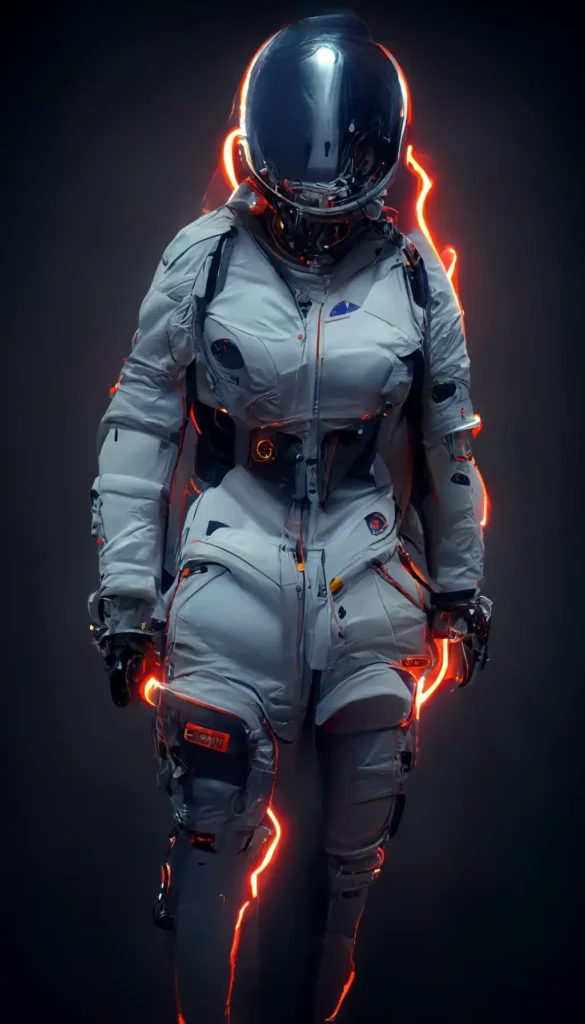
If you have been around the AI Generative art space for the past few months you might just think you know everything there is to know about Midjourney. Well think again! Since the arrival of the latest addition to the family V5 there has been plenty of prompt engineers working night and day to discover new prompts and concoctions to generate amazing images.
Because of this we have created this page for all of you midjourney fans. It contains a huge list of keywords that can be used to create certain art styles. Please be aware that the image shown is not the complete prompt, you will need to add more words to your prompt to get the image seen, but the art style is the same.
We have created this Midjourney megapost to help users new and old to midjourney to give them some kind of inspiration to create some amazing imagry. The prompt keywords are free for you to use to create stunning pieces of art. All we ask in return is if this article has helped you then please do share it with others.
So waether you are a veteran IA artists or perhaps someone who has just started off in the field of AI art we do hope this post helps you on your journey. We will try to ensure this post is kept up to date, but as you are full aware this space moves far too fast for anyone one person to keep up! So if you think we are missing an important prompt drop a comment in the comments section and we can see if we can add it!
Oh and just in case you were thinking about it, you can use these prompts with Dall-e and Stable Diffusion heck even bing image creator might give you some good results.
How to Use these Art Styles in Midjourney
Well it’s a tough one. We normally go buy the following. If it’s important put it at the start of your prompt. This rings true for most images we create, but as we have found out the larger the prompt the more vague things become.
What we suggest you do is play around a little here, you might want to put it at the start of your prompt or perhaps at the end or even dare we say it put it twice? Actually sometimes this works really well when refering to an artists drawing style.
Sadly there isn’t really a definitive answer when it comes to prompts. I know you might feel like you may be wasing your credits, but that’s what it really is a matter of trial and error. Don’t worry once you get the hang of it we are sure you will create some amazing content.
So, here we are a huge list of art styles that you can use to create some amazing imagry.
Art Styles MegaPost List
Please be warned this list is extensive! We have also posted a description of each art style. We hope these help you create some beautiful art with Midjourney.
Tattoo
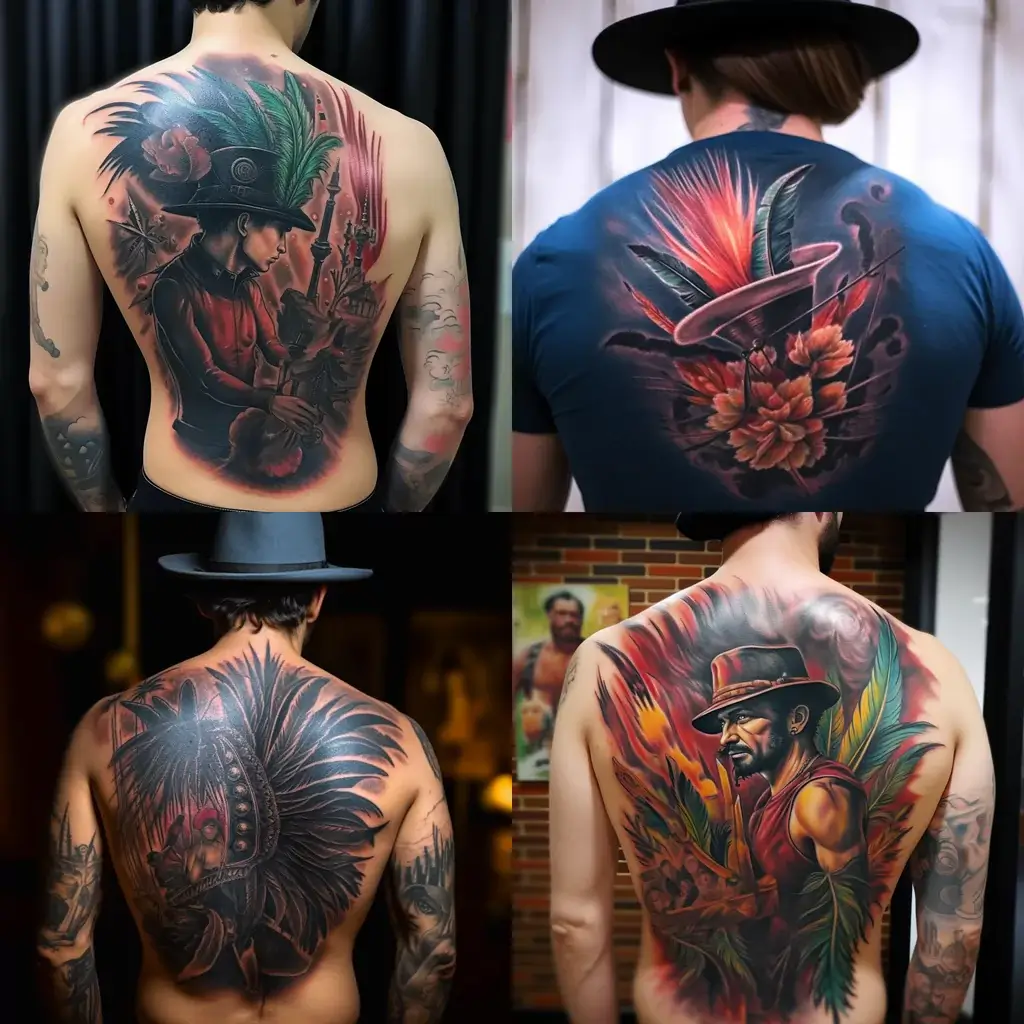
There is two variations of this prompt. One is to create actual tattoos on peoples bodies the other is to create art style tattoos, like the ones you would see in a tattoo shop.
Chibi
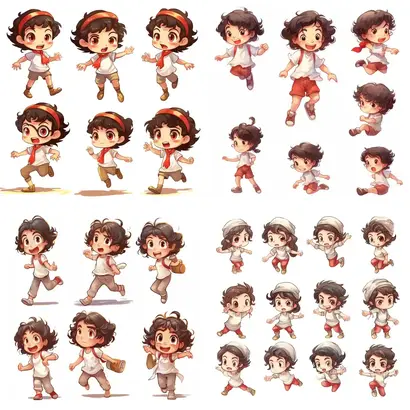
This is an art form commonly found with in Japan culture it’s a form of a caricature. It is also known as Super Deformation. You can commonly find it within manga and anime, it’s basically a way of exaggerating parts of a character. They normally or short and chubby with little limbs and oversize heads. Normally the detail in the character is minimal.
Pen
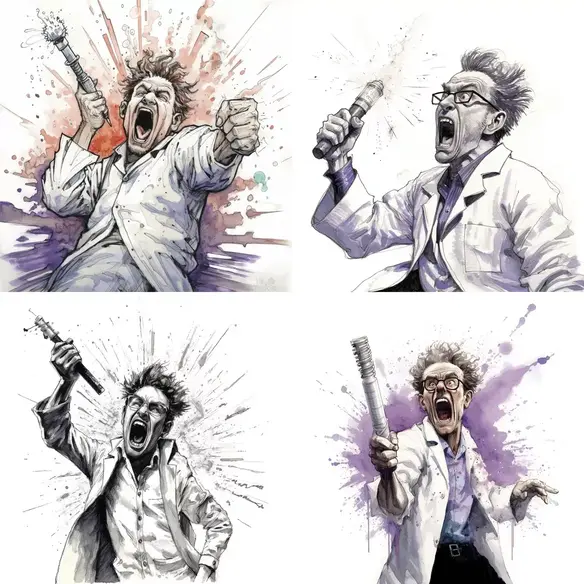
If you want your image to look like it was drawn with a pen, then just let midjourney know that a pen is being used.
Pixar Noir
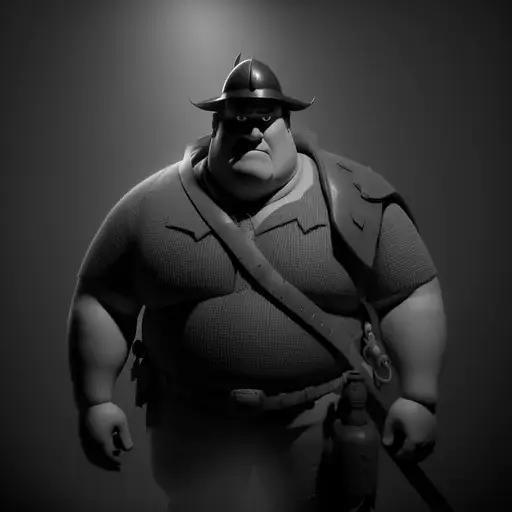
If you have heard of Pixar well imagine a darker version of it. This art style takes the 3d cute characters and adds a noir feeling to it. Great for creating new exciting characters in the pixar universe. Or even coming up with your own unique characters.
Water Color
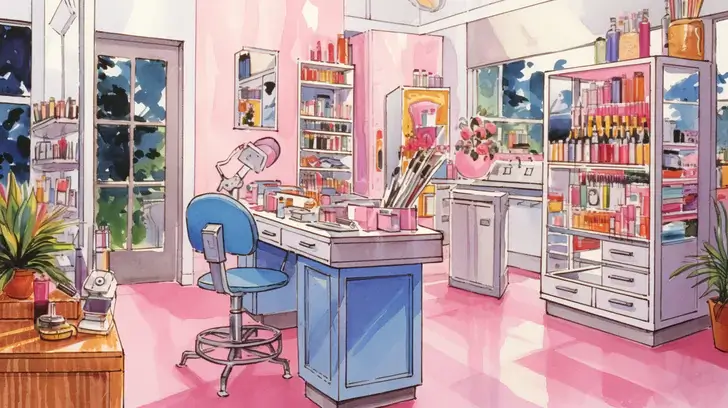
If you would like your image to look like it was painted as a water colour you will need to use this prompt.
Anatomical Drawing
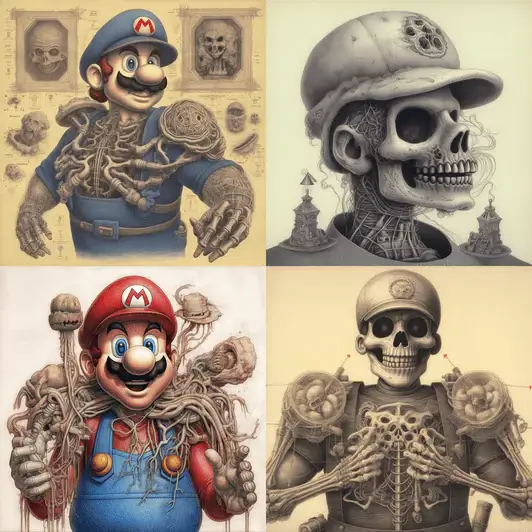
This is a reference drawing that refers to the anatomy. Normally it will be a see through version of a character. This is because anatomical drawings were normally used to draw the insides of the human body. It’s creative we will give you that, but not always “anatomical” correct.
Cyanotype
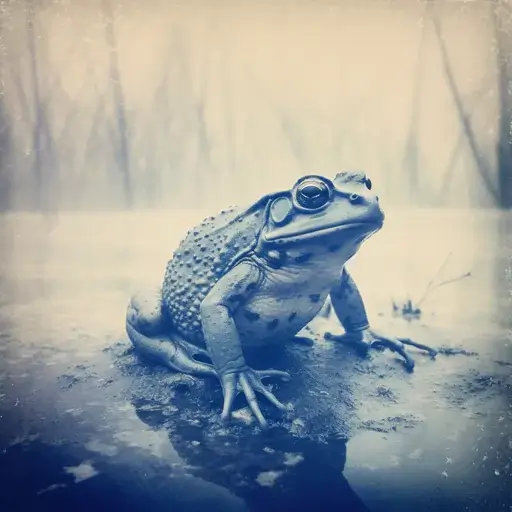
Cyanotype is a 170 year old photographic printing process that produces prints in a distinctive dark greenish-blue. You can try to mimic this art style by using this prompt. It will make your images have a greenish blue tone to them.
Pencil Drawing
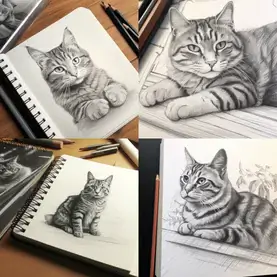
Pencil drawing is a versatile and precise art style that utilizes graphite or charcoal pencils to create detailed and textured illustrations. It allows artists to convey shading, texture, and depth through various pencil techniques, resulting in realistic or stylized depictions on paper..
Spray Paint
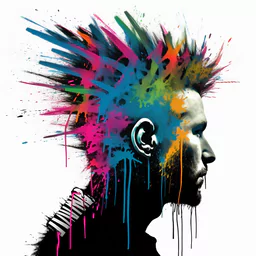
Spray paint is an art style that utilizes aerosol paint cans to create bold and vibrant compositions on various surfaces. It emerged as a popular medium within street art and graffiti culture, known for its distinctive blend of intricate stencils, freehand techniques, and vibrant color schemes. If you want to mimic this style then try this prompt.
Chalk
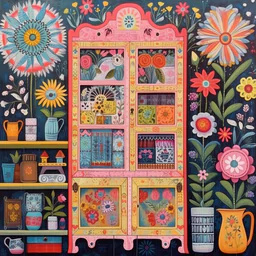
Chalk art is a vibrant and temporary art form that involves creating intricate and colorful drawings on various surfaces using chalk pastels or chalk sticks. It is often seen in street art festivals or as temporary installations, showcasing the artist’s skill and creativity while capturing the attention of passersby.
Sculpture
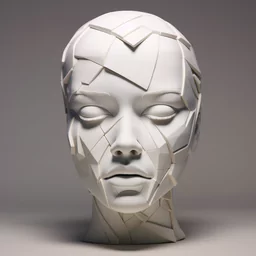
Sculpture is a three-dimensional art form that involves shaping and manipulating materials such as clay, stone, metal, or wood to create physical objects or installations. It allows artists to explore form, volume, texture, and space, engaging viewers from different angles and perspectives, while conveying ideas or expressing emotions through the physicality of the work. You can add other words to this prompt like Sculpture out of clay, stone, marble etc.
Porcelain
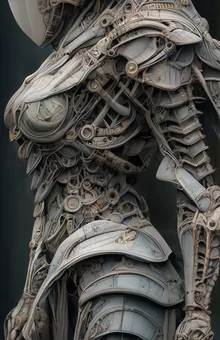
Porcelain art is a delicate and refined art form that involves the creation of intricate and decorative objects using porcelain clay. It often encompasses techniques like melding, shaping, and hand-painting, resulting in exquisite and detailed pieces that showcase the beauty of the translucent white porcelain material. You can define the colour of porcelain too if you wish.
Sketch
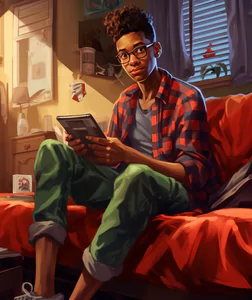
Sketch art is a free-flowing and spontaneous art style that captures the essence of a subject through quick and gestural lines. It often serves as a preliminary study or a standalone artwork, showcasing the artist’s ability to convey form, composition, and mood with minimalistic yet expressive strokes. This is an interesting Midjourney prompt to choose as you can have a wide variation of sketch results.
Halftone
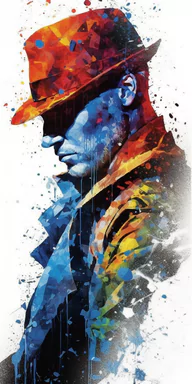
Halftone art style is a technique that utilizes a series of dots or patterns of varying sizes to create the illusion of shading, texture, and tonal values in an image. It is commonly used in print media and graphic design to reproduce continuous-tone images with limited ink or color variations, resulting in a distinctive and visually striking aesthetic.
Plasticine
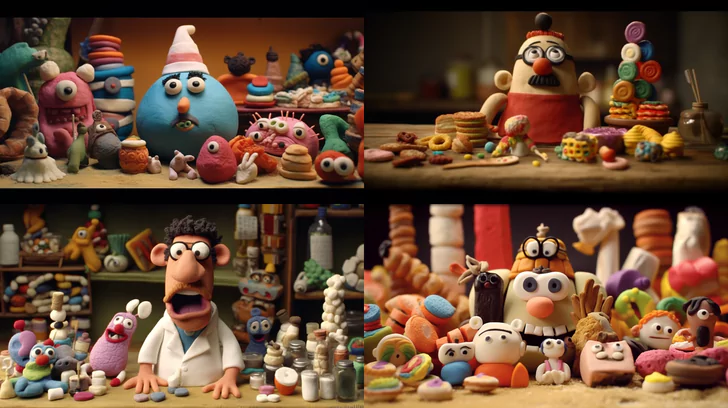
Plasticine art style involves the use of coloured modelling clay, often referred to as plasticine, to create three-dimensional sculptures and animations. This malleable medium allows artists to sculpt and shape characters, objects, or scenes with a tactile and playful quality, offering a unique and tactile approach to artistic expression. If you want your images to look this way then try out this prompt.
Ice Carving
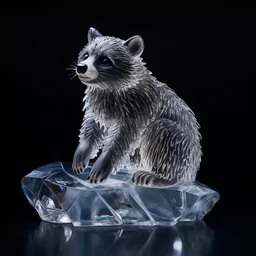
Want to create an image that looks like it was carved out of ice? well now you can, give it a go.
Ghibli
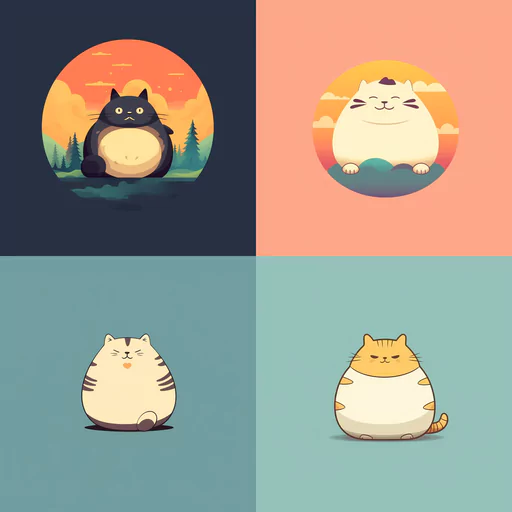
Ghibli art style refers to the distinctive and enchanting visual aesthetic found in the animated films created by Studio Ghibli, a renowned Japanese animation studio. It is characterized by its intricate hand-drawn animation, vibrant colors, attention to detail, and the ability to seamlessly blend fantastical elements with grounded storytelling, creating a whimsical and captivating world for viewers to explore.
Banksy
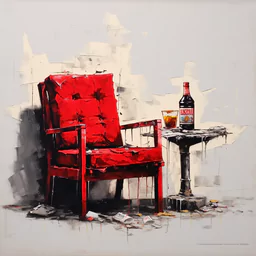
Banksy’s art style is characterized by provocative and often politically-charged stencil graffiti, usually created in public spaces. With a distinct blend of satire, dark humor, and social commentary, Banksy’s work challenges societal norms and highlights issues of power, capitalism, and injustice in a visually striking and thought-provoking manner.
Renaissance
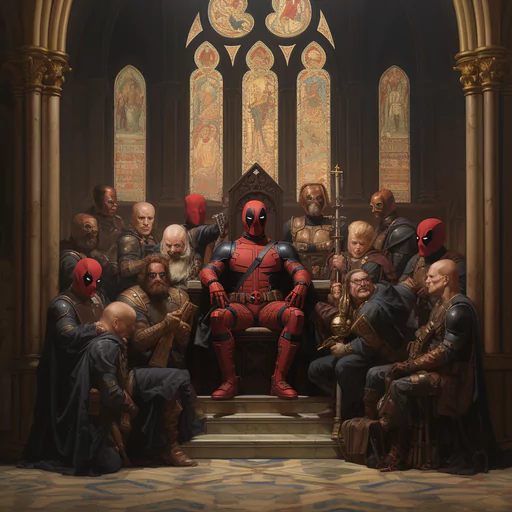
Renaissance art style refers to the artistic period in Europe between the 14th and 17th centuries characterized by a revival of interest in classical Greek and Roman culture. It is characterized by realistic and naturalistic representations, perspective, chiaroscuro, and an emphasis on humanism, leading to ground-breaking achievements in painting, sculpture, and architecture. It’s seen as a golden era in art.
Marvel Comics
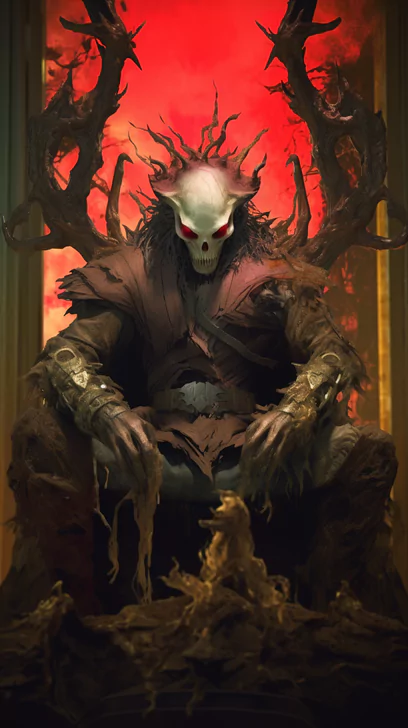
If you want your images to look like they have walked straight out of a marvel comic then try out this prompt. Please note images created with midjourney are not your own. So don’t go annoying marvel trying to sell these kind of images, there are other ways to make money with ai!
CyberPunk
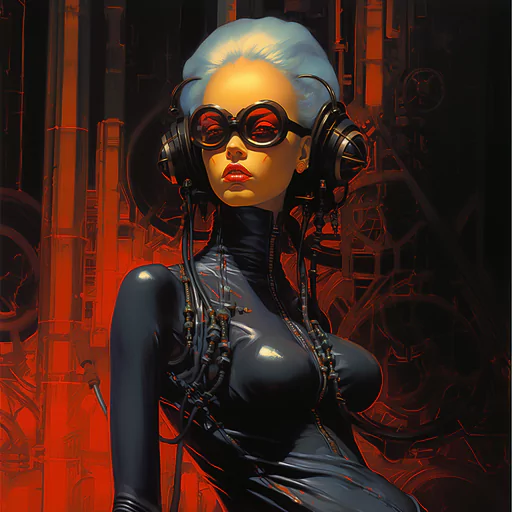
Cyberpunk art style is a futuristic and dystopian genre that often depicts a blend of advanced technology, gritty urban landscapes, and a dark, high-tech society. It explores themes of transhumanism, rebellion, and the impact of technology on society, creating a visually striking aesthetic with neon lights, cybernetic enhancements, and a sense of both awe and unease.
Monochrome
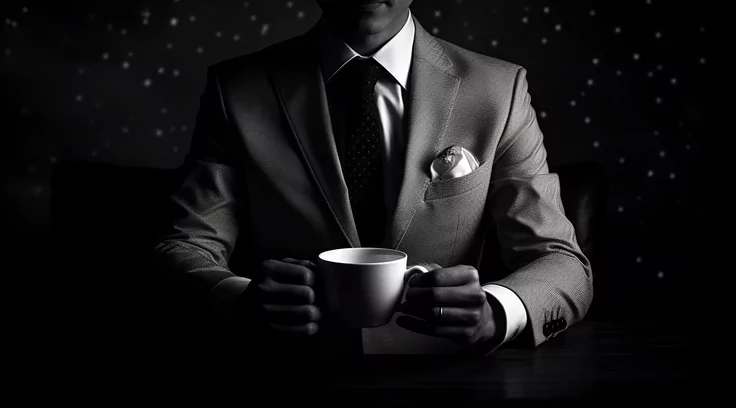
Monochrome art style refers to a visual approach that utilizes a single color or limited range of tones to create a composition. It emphasizes contrasts in light and shadow, textures, and forms, often resulting in a visually impactful and minimalist aesthetic.
Line Drawing
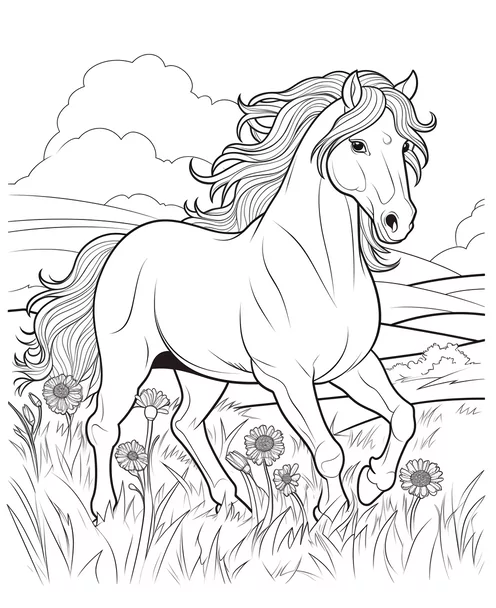
Line drawing art style focuses on the use of lines, whether bold, delicate, or varied in thickness, to create a composition or convey a subject. It emphasizes the power of lines to define shapes, contours, and details, resulting in a simplified yet expressive visual representation.
Ancient Egypt
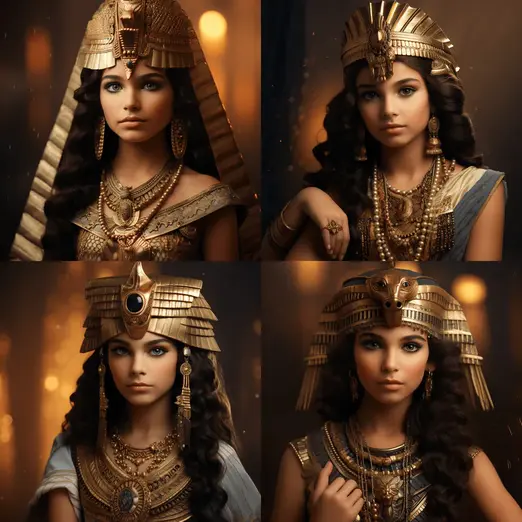
Ancient Egypt art style refers to the artistic traditions and conventions of ancient Egyptian civilization, spanning over three thousand years. It is characterized by a distinct combination of symbolic representation, hierarchical proportions, and a focus on preserving the idealized and eternal aspects of the subject matter, often seen in the form of elaborate tombs, monumental architecture, and detailed hieroglyphic carvings. If you like ancient Egypt why not try out this Midjourney prompt heck why not try to turn something modern into something old?
Wet Paint
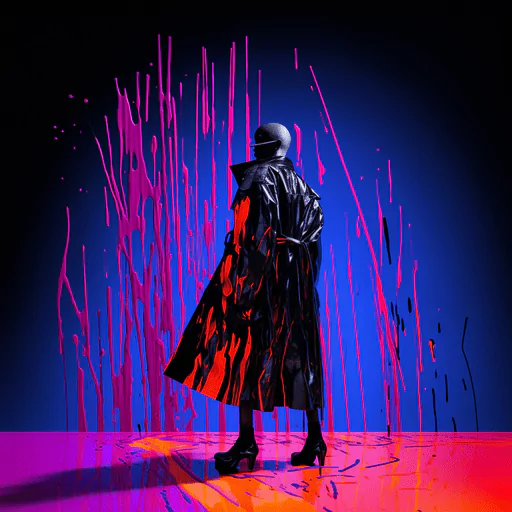
Wet paint art style refers to a technique in which paint is applied to the canvas or surface while still wet, allowing for blending, smudging, and the creation of dynamic textures. It often results in expressive and gestural brushstrokes, capturing the freshness and fluidity of the medium, while offering a sense of immediacy and energy to the artwork.
Postmodernism
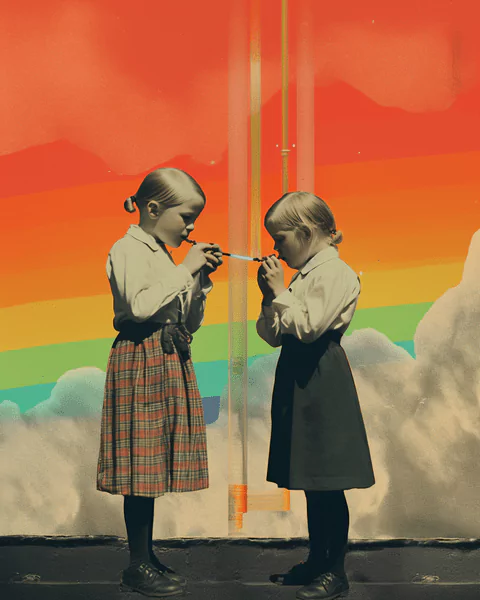
Postmodernism art style is a movement that emerged in the late 20th century, challenging traditional notions of art, representation, and meaning. It embraces a diverse range of styles and mediums, often combining elements from different periods, cultures, and media to create artworks that question authority, blur boundaries, and reflect the fragmented nature of contemporary society. Perfect for all your rebels out there!
Hypermodernism
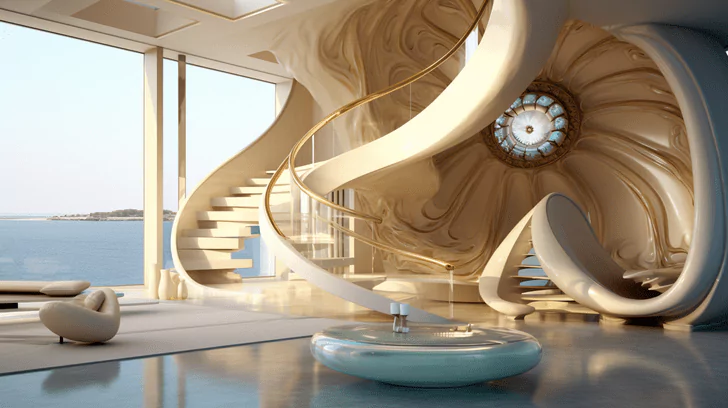
Hypermodernism although not a well know art form yet, refers to modern yet futuristic art. This is a very experimental art form. Play around with it a little it’s quite fun.
Pastel
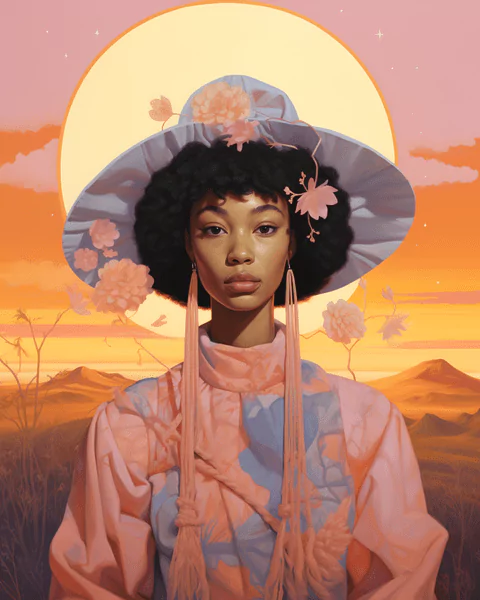
Pastel art style involves the use of soft, powdered pigments in the form of pastel sticks to create delicate and nuanced drawings or paintings. It is known for its ability to produce rich, velvety textures and subtle color gradations, often resulting in dreamy and atmospheric artworks.
Splatter
Splatter art style is a technique that involves applying paint or ink onto a surface by splattering or dripping it, resulting in random and spontaneous patterns. It often creates a sense of energy, movement, and texture, capturing the dynamic and unpredictable nature of the artistic process.
Rembrandt
Rembrandt art style refers to the distinctive artistic approach of the renowned Dutch painter Rembrandt Harmenszoon van Rijn. It is characterized by his masterful use of light and shadow (chiaroscuro), expressive brushwork, and his ability to capture the emotional depth and humanity of his subjects, particularly in portraiture. Want to pretend you have created a masterpiece? well give it a go.
Modernism
Modernism art style refers to a broad movement that emerged in the late 19th and early 20th centuries, characterized by a departure from traditional artistic conventions and a focus on experimentation and innovation. It encompasses various styles and mediums, reflecting a desire to break free from the past, challenge established norms, and explore new forms of expression and representation.
Gold
If you would like you image to look like it was made out of gold then why not try this prompt. Object prompts work too for a wide range of physical matter. Experiment a little.
Neoclassicism
Neoclassicism art style emerged in the late 18th century as a reaction against the excesses of the Rococo period, drawing inspiration from classical Greek and Roman art and ideals. It is characterized by a return to rationality, simplicity, and clarity of form, often featuring balanced compositions, clean lines, and a focus on historical or mythological subjects.
Mannerism
Mannerism art style emerged in the late Renaissance period as a deliberate departure from the balanced and harmonious aesthetics of the High Renaissance. It is characterized by exaggerated or elongated figures, complex poses, unnatural color schemes, and a sense of artificiality, showcasing a heightened focus on intellectual and emotional expression.
Stencil
Stencil art style involves the use of pre-cut templates or stencils to create repeated or layered patterns, designs, or images on various surfaces. It is often associated with street art and graffiti, allowing artists to quickly reproduce intricate and precise artworks with spray paint or other mediums.
Kaleidoscope
Kaleidoscope art style refers to a visually dynamic and vibrant approach that takes inspiration from the mesmerizing patterns and symmetries found in a kaleidoscope. It often incorporates intricate and repetitive geometric shapes, bold color combinations, and symmetrical compositions to create a sense of movement, energy, and optical illusions in the artwork.
Neon
Neon art style refers to an artistic approach that incorporates the use of neon lights as a primary medium for creating vibrant and luminous artworks. It often employs bold colors, glowing effects, and sleek, modern aesthetics, resulting in visually striking compositions that play with light, form, and space.
Rococo
Rococo art style emerged in the 18th century as a reaction against the formalism of the Baroque period, known for its emphasis on elegance, ornamentation, and a lighthearted, playful approach. It is characterized by delicate and intricate detailing, pastel color palettes, curved lines, and depictions of idyllic and romanticized scenes, often reflecting the luxurious lifestyle of the aristocracy.
2D Illustration
2D Illustration art style refers to the creation of visual artworks that are primarily flat and two-dimensional, often produced digitally or by traditional methods like drawing or painting. It encompasses a wide range of styles and techniques, allowing artists to depict subjects with varying degrees of realism, stylization, and storytelling, resulting in captivating and visually engaging illustrations.
Medieval Illustration
Medieval Illustration art style refers to the artistic tradition of the Middle Ages, predominantly seen in illuminated manuscripts and religious texts. It is characterized by intricate details, stylized figures, richly ornamented borders, and the use of vibrant colors to depict biblical scenes, saints, and mythical creatures, reflecting the cultural and religious context of the time.
Harlem Renaissance
Harlem Renaissance art style refers to the cultural and artistic movement that took place in the 1920s and 1930s in Harlem, New York City, primarily among African American artists, writers, and musicians. It encompasses a wide range of artistic expressions, including visual art, literature, music, and performance, showcasing themes of African American identity, pride, and cultural heritage, often characterized by vibrant colors, rhythmic patterns, and depictions of everyday life and social issues.
8 BIT
8-bit art style refers to a visual style that originated in early video games and computer graphics, characterized by simple, blocky pixel art with limited color palettes and resolution. It evokes a sense of nostalgia and charm, often featuring retro gaming icons, geometric shapes, and a distinctive pixelated aesthetic that has become a recognizable and beloved aspect of video game culture.
Sienese Art
Sienese Art refers to the artistic style that emerged in the city of Siena, Italy, during the 13th to 15th centuries. It is characterized by its emphasis on elegant and graceful figures, delicate color palettes, intricate details, and a focus on religious subjects, often depicting scenes from the life of Christ, saints, and biblical narratives.
Romanesque
Romanesque art style emerged in Europe during the 11th and 12th centuries, primarily in the context of Romanesque architecture but also seen in sculpture, painting, and decorative arts. It is characterized by thick walls, round arches, and robust forms, often featuring intricate stone carvings, religious iconography, and a sense of grandeur and solidity inspired by Roman architectural elements.
African
African art style encompasses the diverse artistic traditions and practices of the African continent, reflecting its rich cultural heritage and varied civilizations. It encompasses a wide range of artistic expressions, including sculpture, mask-making, textiles, pottery, and painting, often characterized by stylized representations, symbolism, bold patterns, and a connection to cultural, spiritual, and social contexts.
Ancient Greece
Ancient Greek art style refers to the artistic traditions of the ancient Greek civilization, spanning from the 8th century BCE to the 4th century BCE. It is characterized by a focus on idealized human form, harmonious proportions, naturalistic representations, and a deep appreciation for the balance between beauty and intellect, which greatly influenced Western art and aesthetics.
Labour Poster
Labor Poster art style refers to a genre of art that emerged during the early 20th century, created specifically for labor movements and unions. It is characterized by bold, graphic designs, strong imagery, and concise messages, aiming to communicate and promote workers’ rights, solidarity, and social justice through visually impactful and easily understandable visual compositions.
Psychedelic
Psychedelic art style emerged in the 1960s as an artistic expression of the psychedelic experience, often associated with the counterculture movement. It is characterized by vibrant and surreal visuals, intricate patterns, distorted forms, intense colors, and optical illusions, aiming to evoke a sense of expanded consciousness and transcendental experiences.
Tarot Card
Tarot Card art style refers to the artistic representation found on tarot cards, which are used for divination, meditation, and spiritual exploration. It is characterized by intricate and symbolic imagery, often featuring archetypal figures, esoteric symbols, and a combination of rich colors and detailed illustrations that convey meaning and evoke a sense of mysticism and introspection.
Naturalism
Naturalism art style, also known as artistic naturalism, aims to depict subjects in a highly realistic and lifelike manner, closely mirroring the appearance of the natural world. It emphasizes meticulous attention to detail, accurate representation of anatomy, light and shadow, and a focus on capturing the nuances of the subject matter, often creating a sense of visual truth and authenticity.
Gothic
Gothic art style refers to the artistic movement that emerged in Europe during the late Middle Ages, predominantly in architecture but also seen in sculpture, painting, and illuminated manuscripts. It is characterized by pointed arches, ribbed vaults, flying buttresses, intricate stone carvings, and a sense of verticality, creating awe-inspiring structures that aimed to inspire devotion and a sense of spiritual transcendence.
Constructivism
Constructivism art style emerged in Russia during the early 20th century, particularly after the Russian Revolution, and emphasized the use of industrial materials, geometric forms, and an emphasis on functionality and social purpose. It rejected traditional artistic conventions and sought to integrate art into everyday life, often manifesting in architectural designs, sculptures, and graphic arts that embodied the principles of modernism and the utopian aspirations of the time.
Maximalism
Maximalism art style is a bold and expressive approach characterized by an abundance of elements, patterns, colors, and textures. It embraces an “more is more” philosophy, often featuring eclectic combinations, overwhelming visual stimuli, and a sense of exuberance, rejecting minimalism’s simplicity in favor of a rich and layered aesthetic.
Fauvism
Fauvism art style emerged in the early 20th century as a movement that defied traditional representation and embraced vibrant colors and bold brushwork. It emphasized the emotional and expressive qualities of color, distorting and simplifying forms to create a sense of raw intensity and heightened visual impact.
Minimalist
Minimalist art style emerged in the mid-20th century as a movement that emphasized simplicity, reduction, and a focus on essential elements. It sought to strip away unnecessary ornamentation and details, often featuring clean lines, geometric forms, monochromatic palettes, and a deliberate sense of restraint, inviting viewers to engage with the artwork in a contemplative and immersive manner.
Abstract Expressionism
Abstract Expressionism art style emerged in the mid-20th century in the United States, emphasizing spontaneous, intuitive, and gestural approaches to art-making. It sought to express the emotional and psychological states of the artists through non-representational forms, bold brushwork, drips, and splatters, often resulting in large-scale canvases that conveyed a sense of energy, freedom, and the artist’s subjective experience.
Pre-Raphaelite
Pre-Raphaelite art style emerged in the mid-19th century as a rejection of the industrialization and academic art of the time, drawing inspiration from medieval and early Renaissance art. It emphasized detailed and meticulous rendering, vibrant colors, and symbolic storytelling, often depicting romanticized scenes from mythology, literature, and nature.
Pictogram
Pictogram art style utilizes simplified visual symbols or icons to represent ideas, concepts, or objects, communicating meaning through visual representation rather than detailed realism. It is often used in signage, wayfinding systems, and visual communication to convey information quickly and universally.
Drypoint
Drypoint art style is a printmaking technique where an image is incised into a plate, usually made of metal or acrylic, using a hard-pointed needle or another sharp object. Ink is then applied to the plate and transferred onto paper, resulting in a characteristic rich, velvety line quality and often capturing expressive and textural effects.
Normcore
Normcore art style emerged as a fashion and cultural movement in the early 2010s, characterized by a deliberate embrace of simplicity, banality, and unpretentiousness. It often involves plain, everyday clothing and an aesthetic that rejects trends, challenging traditional notions of style and individuality.
Manga
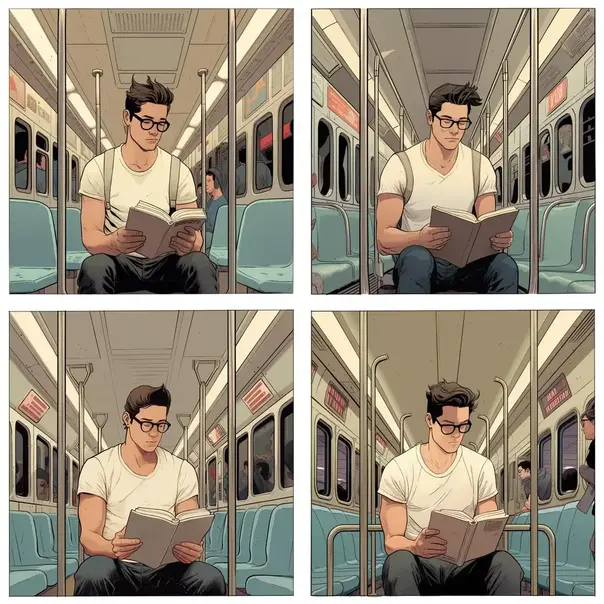
Manga art style refers to the distinctive style of Japanese comic books and graphic novels, known as manga. It is characterized by its unique visual language, featuring large expressive eyes, exaggerated emotions, dynamic panel layouts, and a wide range of genres, including fantasy, romance, action, and slice-of-life.
Aboriginal
Aboriginal art style encompasses various art forms created by Indigenous peoples of Australia. It is characterized by its connection to the land, spirituality, and cultural heritage. Often incorporating intricate dot patterns, vibrant colors, and storytelling motifs, Aboriginal art expresses narratives, traditions, and Dreamtime stories.
Dark Fantasy
Dark Fantasy art style combines elements of fantasy and horror, often featuring supernatural creatures, mythical beings, and eerie landscapes. It explores themes of darkness, mystery, and the macabre, creating a visually captivating and often emotionally charged atmosphere.
Metalcore
Metalcore art style is associated with the metalcore music genre, characterized by aggressive and intense sounds. The visual aesthetic often incorporates dark, gritty, and chaotic imagery, featuring elements of violence, rebellion, and distorted representations, reflecting the energy and intensity of the music.
Olmec
Olmec art style refers to the artistic traditions of the Olmec civilization, an ancient Mesoamerican culture. It is characterized by monumental stone sculptures, often depicting colossal heads with distinct facial features, along with other figurative representations of gods, animals, and mythical creatures.
Fantasy
Fantasy art style encompasses imaginative and fantastical themes, often drawing inspiration from mythology, folklore, and imaginary worlds. It showcases extraordinary creatures, epic landscapes, magical elements, and heroic characters, inviting viewers into realms of wonder and escapism.
Blueprint
Blueprint art style refers to the use of blueprints or technical drawings as an artistic medium. It typically features highly detailed and precise architectural or mechanical designs, rendered in blue ink on a white background, often emphasizing the precision and technical aspects of the subject matter.
Bone Carving
Bone carving art style involves the intricate carving of bone or ivory materials to create decorative or symbolic objects. It is characterized by meticulous craftsmanship, often incorporating traditional cultural motifs, intricate patterns, and storytelling elements.
Origami
Origami art style involves the folding of paper to create intricate and sculptural forms. It originated in Japan and emphasizes precision, geometric patterns, and the transformation of a flat sheet of paper into three-dimensional objects, showcasing the beauty of simplicity and the harmony between form and function.
Post-Impressionism
Post-Impressionism art style emerged in the late 19th century as a reaction against the limitations of Impressionism. It emphasized the use of vivid colors, bold brushstrokes, and expressive techniques to convey emotions and subjective interpretations of reality, often exploring personal symbolism and abstract forms.
Pointillism
Pointillism art style, pioneered by Georges Seurat and Paul Signac, involves the creation of images using small, distinct dots or points of pure color. By optically blending these dots, vibrant and luminous compositions are achieved, capturing light, texture, and form with meticulous precision.
Neo-Impressionism
Neo-Impressionism art style, also known as Divisionism or Chromoluminarism, built upon the principles of Impressionism but introduced a more systematic approach to color and light. Artists applied small, separate brushstrokes of contrasting colors, which optically mixed when viewed from a distance, creating vibrant and harmonious compositions.
Neo-Classicism
Neo-Classicism art style emerged in the 18th century as a revival of classical Greek and Roman art. It emphasized order, balance, and idealized representations, often drawing inspiration from ancient mythology and history. Neo-Classical artworks featured clear compositions, refined technique, and a focus on moral and intellectual themes.
Jazz Age
Jazz Age art style, also known as the Roaring Twenties, emerged during the 1920s and reflected the exuberance and cultural shifts of the time. It encompassed various artistic expressions, including visual art, fashion, design, and architecture, often characterized by bold colors, geometric shapes, and a sense of glamour and modernity.
Kawaii
Kawaii art style originated in Japan and is characterized by its cute, charming, and lovable aesthetic. It often features colorful and rounded characters, adorable animals, and whimsical elements, creating a sense of innocence, joy, and childlike wonder.
Bauhaus
Bauhaus art style emerged as a German art school in the early 20th century, combining fine art, crafts, and design. It emphasized the integration of art and technology, embracing functional forms, simplicity, and geometric abstraction. Bauhaus artworks often showcased clean lines, minimal ornamentation, and a focus on the unity of form and function.
Caricature
Caricature art style involves the exaggerated depiction of people or subjects to emphasize their distinctive features, often for satirical or humorous purposes. It simplifies and distorts physical attributes or mannerisms to create recognizable and often amusing representations.
Airbrush
Airbrush art style involves the use of an airbrush tool to spray paint onto a surface, creating smooth gradients, soft edges, and precise details. It allows for precise control and blending of colors, often used in creating photorealistic or highly detailed artworks.
Elf Punk
Elf Punk art style combines elements of fantasy and punk aesthetics, often featuring elven or mythical creatures in a futuristic, dystopian setting. It blends elements of magic, technology, and rebellion, showcasing a fusion of fantastical and gritty imagery.
Steelpunk
Steelpunk art style combines elements of steampunk and industrial aesthetics, often depicting a world where steam power and mechanical contraptions are prevalent. It features a mix of Victorian-era designs, gears, machinery, and metallic textures, creating a visually rich and mechanical atmosphere.
Zbrush
Zbrush art style refers to the use of the digital sculpting software called Zbrush to create highly detailed and lifelike three-dimensional models. It allows artists to sculpt and paint virtual objects with intricate details, textures, and forms, often used in the fields of film.
Retrofuturism
Retrofuturism art style combines elements of futuristic visions from the past, particularly the mid-20th century, with a nostalgic or vintage aesthetic. It often portrays a future as imagined in the past, featuring sleek and optimistic designs, space exploration themes, and a blend of modern technology with retro elements.
Science Fiction
Science Fiction art style encompasses artworks that depict futuristic or speculative concepts, often exploring advanced technology, space exploration, alien worlds, and imaginative scenarios. It combines elements of science and fantasy to create visually captivating and thought-provoking images.
Realism
Realism art style emerged in the mid-19th century as a rejection of romanticism and idealized representations. It aims to depict subjects with accuracy and detail, capturing everyday life, ordinary people, and the natural world in a precise and unembellished manner.
Synesthesia
Synesthesia art style explores the concept of synesthesia, a condition where stimulation of one sensory or cognitive pathway leads to experiences in another. In visual art, it represents the blending of senses, often using vibrant colors, abstract forms, and experimental techniques to evoke multisensory perceptions.
Deathcore
Deathcore art style is associated with the genre of music called deathcore, which combines elements of death metal and metalcore. The visual style often features dark and aggressive imagery, such as skulls, gore, and occult symbols, reflecting the intense and extreme nature of the music.
SolarPunk
SolarPunk art style envisions a future where sustainable and renewable energy sources, ecological harmony, and community resilience are prevalent. It showcases vibrant and lush landscapes, green technologies, and utopian visions, inspiring a positive outlook and promoting environmental consciousness.
Sumi-e
Sumi-e art style is a traditional Japanese ink painting technique that uses black ink, water, and brush strokes to create minimalist and contemplative artworks. It emphasizes simplicity, harmony, and capturing the essence of a subject with a few precise brush movements.
Ancient Greek
Ancient Greek art style refers to the artistic production of ancient Greece, particularly during the Classical and Hellenistic periods. It encompasses various forms, including architecture, sculpture, pottery, and painting, and is characterized by its emphasis on idealized human figures, balance, and harmony.
Belle Epoque
Belle Epoque art style emerged in the late 19th century and early 20th century, particularly in France, during a period of optimism, prosperity, and cultural exuberance. It is characterized by its elegance, opulence, and the celebration of beauty, often depicting scenes of leisure, fashion, and the upper-class lifestyle.
Ancient Roman
Ancient Roman art style refers to the artistic production of ancient Rome, spanning several centuries. It encompasses architecture, sculpture, painting, and decorative arts, showcasing a combination of influences from Greek art and distinct Roman characteristics, such as realistic portraiture, grand architectural designs, and elaborate ornamentation.
Ancient Egyptian
Ancient Egyptian art style refers to the artistic production of ancient Egypt, which spanned thousands of years. It is characterized by its formal and symbolic representations, including hieroglyphic inscriptions, monumental architecture, sculptures of gods and pharaohs, and intricate decorative motifs.
Coloring Book
Coloring book art style refers to illustrations or artworks designed for coloring activities. It typically features bold outlines
Anaglyph
Anaglyph art style involves creating images that can be viewed in three dimensions when wearing special red and cyan glasses. It utilizes the technique of offsetting two color-filtered images to create an illusion of depth, resulting in a visually immersive and stereoscopic effect.
Minimalism
Minimalism art style is characterized by its simplicity, austerity, and focus on essential elements. It seeks to distill art down to its fundamental forms, often utilizing geometric shapes, clean lines, neutral colors, and a sense of spaciousness to convey a sense of calm and clarity.
DunHuang
DunHuang art style refers to the artistic tradition of the Dunhuang Caves, a UNESCO World Heritage Site in China. It encompasses a wide range of Buddhist art, including murals, sculptures, and manuscripts. The style is known for its intricate details, vibrant colors, and depiction of religious narratives and celestial realms.
Retropunk
Retropunk art style combines elements of retro aesthetics with punk influences. It draws inspiration from the past, particularly the 1980s, while incorporating rebellious and countercultural themes. It often features a fusion of vintage technology, dystopian imagery, and a vibrant, rebellious spirit.
Noir Line
Noir Line art style is characterized by its use of dark and dramatic black lines against a contrasting background. It draws inspiration from film noir and the hard-boiled detective genre, evoking a sense of mystery, suspense, and a noir atmosphere. It often features stark lighting, chiaroscuro effects, and strong, bold lines.
Gel Pen
Gel pen art style involves creating artworks using gel ink pens. It allows for smooth, flowing lines and vibrant colors. Gel pen art can encompass a wide range of subjects and styles, from intricate patterns and detailed illustrations to calligraphy and lettering.
Qajar
Qajar art style refers to the artistic production during the Qajar dynasty in Iran, which spanned from the late 18th century to the early 20th century. It features a blend of Persian, European, and other regional influences, characterized by intricate details, rich colors, and a sense of opulence.
De Stijl
De Stijl art style, also known as Neoplasticism, emerged in the early 20th century in the Netherlands. It emphasizes geometric abstraction, primary colors, and a reduction of forms to their essential elements. De Stijl art seeks to achieve harmony and universality through a balance of vertical and horizontal lines, geometric shapes, and a limited color palette.
Art Nouveau
Art Nouveau art style emerged in the late 19th century and early 20th century as a reaction against academic art and historicism. It is characterized by its organic, flowing forms, intricate patterns, and decorative motifs inspired by nature. Art Nouveau often appears in architecture, decorative arts, and graphic design.
Futurism
Futurism art style originated in Italy in the early 20th century and celebrated modernity, technology, and the dynamism of the machine age. It emphasizes speed, movement, and the portrayal of energy through fragmented forms, bold colors, and dynamic compositions. Futurism sought to capture the spirit of progress and the excitement of the future.
Art Deco
Art Deco art style emerged in the 1920s and 1930s and is characterized by its streamlined, geometric forms, luxurious materials, and decorative elegance. It encompasses architecture, interior design, fashion, and visual arts, reflecting a combination of modernist influences, exotic motifs, and a sense of glamour.
Folk Art
Folk art style refers to traditional art forms that are created by artisans and craftspeople within a specific culture or community. It often reflects the cultural heritage, customs, and beliefs of a particular group, showcasing a wide range of techniques, materials, and subject matter. Folk art is characterized by its authenticity, simplicity, and connection to everyday life.
Letterism
Letterism art style, also known as Lettrism, is a movement that emerged in the 1940s and explores the aesthetic and expressive possibilities of letters, words, and typography. It seeks to blur the boundaries between visual art and written language, often incorporating abstract forms, experimental compositions, and the deconstruction of traditional writing systems.
Propaganda
Propaganda art style is characterized by its use of visual communication techniques to promote a particular political, social, or ideological agenda. It aims to influence public opinion, often employing persuasive imagery, slogans, and symbols. Propaganda art can be found in various forms, including posters, illustrations, and multimedia artworks.
Vanadium
Vanadium art style refers to artworks that incorporate vanadium, a chemical element, in their creation. Vanadium compounds can be used as pigments to achieve unique colors and effects in paintings, ceramics, and other artistic mediums. The use of vanadium in art allows for experimentation with vibrant hues and a distinct visual presence.
Tungsten
Tungsten art style involves the utilization of tungsten, a metallic element, in the creation of artworks. Tungsten can be manipulated to produce sculptures, jewelry, and other artistic pieces. Its high melting point, durability, and unique properties make tungsten an interesting material for artistic exploration.
Topaz
Topaz art style involves the incorporation of topaz gemstones or their representation in artworks. Topaz, known for its variety of colors and brilliant luster, can be used in jewelry, sculptures, and mixed-media artworks. The inclusion of topaz adds a touch of elegance, beauty, and vibrant colors to the art piece.
String
String art style is a technique that uses thread, yarn, or string to create geometric patterns, shapes, or images on a surface. The thread is stretched and secured between points, forming intricate designs with lines and curves. String art can be done on various materials such as wood, canvas, or paper, resulting in visually striking and textured compositions.
Pen Drawing
Pen drawing art style involves the use of pens, such as ink pens or markers, to create detailed and precise drawings. It can range from intricate line work to shading and cross-hatching techniques. Pen drawing allows artists to achieve a variety of effects, from fine and delicate lines to bold and expressive strokes.
Vector
Vector art style involves the use of vector graphics software to create images composed of mathematical paths and shapes. Unlike raster images, vector graphics can be scaled without losing quality. Vector art is often used in graphic design, illustrations, and digital art, allowing for flexibility, smooth lines, and precise control over shapes and colors.
Interpolated Rotoscope
Interpolated Rotoscope art style combines traditional hand-drawn animation with computer-generated interpolation techniques. It involves tracing over live-action footage frame by frame, creating a fluid and realistic animation. Interpolated Rotoscope art is known for its dynamic movement, lifelike character animations, and unique blend of traditional and digital techniques.
Tourmaline
Tourmaline art style encompasses artworks that feature or are inspired by the gemstone known as tourmaline. Tourmaline comes in various colors and exhibits unique properties, making it a visually captivating element in jewelry, sculptures, and mixed-media artworks. Its vibrant hues and crystal formations are often incorporated into artistic compositions to add a sense of beauty and mystique.
Tin
Tin art style involves the use of tin or tinplate as a medium for creating artworks. Tin can be manipulated through embossing, engraving, and other techniques to create intricate designs, patterns, and relief sculptures. Tin art has a long history and is often associated with folk traditions and decorative craftsmanship.
Titanium
Titanium art style refers to artworks that incorporate titanium, a metallic element, in their creation. Titanium can be used in various forms, such as sheets, wires, or powders, to achieve unique visual effects and textures. Its lightweight, corrosion-resistant properties, and metallic luster make it a versatile material for sculptures, jewelry, and mixed-media artworks.
Steel
Steel art style involves the use of steel, a strong and durable alloy, as a medium for artistic expression. Steel can be manipulated through welding, forging, and other techniques to create sculptures, installations, and architectural features. Its industrial aesthetic, versatility, and ability to withstand outdoor conditions make it a popular choice for contemporary artists.
Stone
Stone art style refers to artworks created using various types of stone as a medium. Artists carve, sculpt, or assemble stones to create three-dimensional sculptures, reliefs, or installations. Stone art encompasses a wide range of techniques, including carving, chiseling, and polishing, allowing artists to explore different textures, colors, and forms inherent to the stone material.
Silk
Silk art style involves the use of silk fabric as a canvas for creating paintings, embroidery, or textile art. Silk’s smooth texture and ability to hold vibrant dyes make it a favored material for intricate and detailed artworks. Silk art often incorporates techniques such as silk painting, silk-screen printing, or silk embroidery to produce visually stunning and delicate compositions.
Silver
Silver art style encompasses artworks that feature or utilize silver, a precious metal known for its beauty and value. Silver can be used in jewelry making, sculpture, and decorative objects. Its reflective surface, malleability, and historical significance have made it a popular material for artistic expression across cultures and time periods.
Neon
Neon art style involves the use of neon gas-filled tubes to create luminous and vibrant artworks. Neon lights are bent, shaped, and assembled into various forms, letters, or images, resulting in visually striking installations and signage. Neon art is often associated with urban environments and the aesthetics of nightlife, bringing a sense of energy and illumination to the artworks.
Leather
Leather art style involves the use of leather as a medium for artistic creations. Artists can work with different types of leather, such as cowhide, pigskin, or reptile skins, to create sculptures, wearable art, or mixed-media artworks. Leather art showcases the unique texture, durability, and versatility of this natural material.
Ruby
Ruby art style refers to artworks that feature or are inspired by the gemstone known as ruby. Rubies are prized for their deep red color and have been used in jewelry and decorative objects for centuries. Ruby art may incorporate the gemstone itself or use its vibrant hue as a source of inspiration for paintings, sculptures, and mixed-media works.
Sapphire
Sapphire art style encompasses artworks that feature or are inspired by the gemstone known as sapphire. Sapphires are valued for their various colors. If you want one of your Midjourney images to look like it was made from a precious gem the try this out.
Platinum
Platinum art style involves the use of platinum, a rare and precious metal, as a medium for creating artworks. Platinum’s distinctive silver-white color, durability, and resistance to corrosion make it a sought-after material for jewelry, sculptures, and mixed-media pieces. Platinum art often exhibits a sleek and luxurious aesthetic.
Rubber
Rubber art style involves the use of rubber or rubber-based materials as a medium for artistic expression. Artists can manipulate rubber through techniques like molding, casting, and carving to create sculptures, installations, and mixed-media artworks. Rubber art explores the unique properties of the material, such as its elasticity, flexibility, and tactile qualities.
Rhodium
Rhodium art style refers to artworks that incorporate rhodium, a precious metal belonging to the platinum group, in their creation. Rhodium’s reflective and corrosion-resistant properties make it a popular choice for plating jewelry, sculptures, and other artistic objects. Rhodium art often showcases a bright and lustrous appearance.
Palladium
Palladium art style involves the use of palladium, a rare and lustrous metal, as a medium for artistic creations. Palladium’s silver-white color and lightweight nature make it suitable for jewelry, sculptures, and mixed-media artworks. Palladium art often combines elegance and modernity in its aesthetic.
Opal
Opal art style encompasses artworks that feature or are inspired by the gemstone known as opal. Opals are known for their iridescent play-of-color, which creates a mesmerizing visual effect. Opal art may incorporate opal gemstones or use their unique colors and patterns as a source of inspiration for paintings, jewelry, and mixed-media works.
Plastic
Plastic art style involves the use of plastic materials as a medium for artistic expression. Artists can work with various types of plastic, such as acrylic, PVC, or polycarbonate, to create sculptures, installations, and mixed-media artworks. Plastic art explores the versatility, malleability, and vibrant colors of this synthetic material.
Impressionism
Impressionism art style emerged in the late 19th century and is characterized by its emphasis on capturing fleeting moments and atmospheric effects through loose brushwork and vibrant colors. Impressionist artists aimed to depict the play of light and shadow, as well as the transient nature of scenes and landscapes. This art style revolutionized traditional approaches to painting and laid the foundation for modern art movements.
Muralism
Muralism art style is a form of public art that involves creating large-scale paintings or murals on walls, buildings, or other architectural surfaces. Muralists often address social, political, and cultural themes in their works, aiming to make art accessible to a broader audience. Muralism emerged as a significant art movement in the early 20th century, with artists like Diego Rivera and David Alfaro Siqueiros contributing to its development.
Pixel
Pixel art style involves creating digital or analog artworks using small, square-shaped units called pixels. Artists arrange pixels to form images with a retro, low-resolution aesthetic reminiscent of early video games and computer graphics. Pixel art often utilizes limited color palettes and geometric shapes to create nostalgic and visually striking compositions.
Emerald
Emerald art style refers to artworks that feature or are inspired by the gemstone known as emerald. Emeralds are valued for their rich green color and have been used in jewelry and decorative objects for centuries. Emerald art may incorporate the gemstone itself or draw inspiration from its vivid hue to create paintings, sculptures, and mixed-media works.
Wax
Wax art style involves the use of wax as a medium for creating artworks. Artists can work with various types of wax, such as beeswax or encaustic wax, to create sculptures, paintings, and mixed-media pieces. Wax art allows for unique textures, layering, and the incorporation of vibrant pigments.
Needlepoint
Needlepoint art style is a form of embroidery that utilizes a canvas and a needle to create intricate designs. Needlepoint artists use a variety of stitches and thread types to create detailed images, patterns, and textures. This art style is often applied to decorative items, such as tapestries, cushions, and wall hangings.
Nylon
Nylon art style involves the use of nylon fabric or materials made from nylon as a medium for artistic expression. Artists can manipulate nylon through techniques such as sewing, weaving, and heat manipulation to create sculptures, installations, and textile-based artworks. Nylon art explores the material’s transparency, durability, and unique tactile qualities.
Mercury
Mercury art style refers to artworks that incorporate or are inspired by the element mercury. Artists may use liquid mercury in installations, reflecting its metallic properties and its reflective surface. Additionally, mercury’s symbolism or properties may serve as inspiration for various artistic expressions.
Vapor Deposition
Vapor deposition art style involves the application of thin layers of material onto a surface through a process called vapor deposition. Artists use techniques such as physical vapor deposition (PVD) or chemical vapor deposition (CVD) to deposit materials like metals or ceramics onto substrates. Vapor deposition art allows for the creation of unique textures, reflective surfaces, and color variations.
Motion Blur
Motion blur art style aims to depict movement or action by intentionally blurring certain elements in a composition. Artists use techniques such as long exposure photography or brushwork to create a sense of dynamic energy and motion in their artworks. Motion blur art captures the fluidity and transient nature of subjects in various mediums, including painting, photography, and digital art.
Long Exposure
Long exposure art style involves using extended exposure times in photography to capture subjects in low-light conditions or create intentional blur effects. By using longer exposure times, artists can capture motion, light trails, or ethereal qualities in their photographs. Long exposure art can create dreamlike, surreal, or visually captivating imagery.
HDR
HDR (High Dynamic Range) art style involves capturing or creating images with a high dynamic range, which refers to the range of tones and colors in an image from the darkest shadows to the brightest highlights. HDR techniques involve combining multiple exposures of the same scene to achieve greater detail and tonal range. HDR art often results in vibrant, realistic, and visually striking imagery.
Low-poly
Low-poly art style is characterized by its use of geometric shapes with minimal detail to create three-dimensional models or illustrations. Artists intentionally limit the number of polygons in their artworks, giving them a stylized and simplified appearance. Low-poly art is often used in video games, digital illustrations, and graphic design.
Multiple Exposure
Multiple exposure art style involves overlaying multiple images or exposures in photography to create a composite image. By combining multiple photographs, artists can achieve layered, abstract, or surreal effects. Multiple exposure art allows for the blending of different subjects, textures, and environments to create visually captivating compositions.
Thermal Imaging
Thermal imaging art style utilizes thermal imaging cameras or sensors to capture and create artworks based on thermal radiation emitted by objects. Artists can manipulate thermal images to highlight temperature variations, reveal hidden patterns, or explore the relationship between heat and form. Thermal imaging art provides a unique perspective on the invisible world of heat and energy.
Lead
Lead art style refers to artworks created using lead as a primary material. Lead can be used for sculpting, casting, or drawing purposes. Artists may create sculptures, reliefs, or intricate drawings using lead, exploiting its malleability and softness to achieve desired forms and textures.
Photogram
Photogram art style involves creating images by placing objects directly onto light-sensitive paper or film and exposing them to light. The objects block the light, resulting in silhouettes or shadow-like impressions on the paper. Photogram art allows for experimentation with composition, form, and light, often resulting in abstract or surreal imagery.
Marble
Marble art style refers to artworks created using marble as the primary material. Artists can sculpt, carve, or create installations using marble. Marble’s natural beauty, durability, and ability to be polished make it a popular choice for creating statues, architectural elements, and decorative pieces.
Magnesium
Magnesium art style involves utilizing magnesium, a highly reactive metal, as a medium for artistic expression. Artists may incorporate magnesium in sculptures, installations, or mixed-media artworks. The unique properties of magnesium, such as its brightness, lightness, and flammability, can be exploited to create visually captivating and conceptually engaging pieces.
Infra-red
Infra-red art style utilizes infrared light or infrared-sensitive film to capture images. Infrared light lies beyond the visible spectrum, enabling artists to capture unique perspectives, reveal hidden details, or explore the effects of heat in their artworks. Infra-red art often produces dreamlike or surreal imagery with distinctive tonal qualities.
Panoramic Stitching
Panoramic stitching art style involves capturing multiple images of a scene and digitally stitching them together to create a wide-angle or panoramic view. Artists can use specialized software or manual techniques to seamlessly merge the images, resulting in expansive and immersive compositions. Panoramic stitching art showcases vast landscapes, architectural spaces, or immersive environments.
Macramé
Macramé art style involves creating textiles or decorative pieces by knotting cords or threads together. Artists can create intricate patterns, textures, and designs using various knotting techniques. Macramé art is often used to create wall hangings, plant hangers, or jewelry, showcasing the beauty of handcrafted fiber art.
Voxel
Voxel art style involves creating three-dimensional models or scenes using individual cube-shaped voxels. Artists arrange these voxels to form objects or environments, resembling pixel art in a three-dimensional space. Voxel art often evokes a retro aesthetic and is popular in video games or digital art.
Complementary Colors
Complementary Colors art style involves using colors that are opposite each other on the color wheel to create contrast and vibrancy in the artwork. This technique enhances the visual impact and creates a sense of balance and harmony through the interaction of complementary hues.
Negative Space
Negative Space art style focuses on the areas surrounding the main subject or form, rather than the subject itself. It utilizes the empty or unoccupied spaces to create a sense of balance, simplicity, and visual interest, often resulting in minimalist and thought-provoking compositions.
Pencil Drawing
Pencil Drawing art style utilizes pencils of varying hardness and shading techniques to create detailed and realistic drawings. It allows artists to capture subtle textures, values, and fine details with precision, creating intricate and lifelike renderings.
Woodcut
Woodcut art style involves carving an image into a wooden block and using the block to make prints. The artist carves away the areas that are not meant to be printed, leaving raised areas that are inked and pressed onto paper. Woodcut prints often exhibit bold lines, rich textures, and a graphic quality.
Woodblock paint
Woodblock paint art style combines woodblock printing techniques with the application of color. It involves carving an image onto a wooden block, inking the block, and transferring the inked image onto paper or another surface. The artist then adds color by hand or using additional blocks. This art style is characterized by its combination of printmaking and painting techniques.
Lego
Lego art style involves creating artworks using Lego bricks as the primary medium. Artists use Lego bricks to construct sculptures, mosaics, or installations, exploring the possibilities of color, form, and texture offered by these iconic building blocks. Lego art often appeals to both children and adults, evoking a sense of playfulness and nostalgia.
Ukiyo
Ukiyo art style originated in Japan during the Edo period and is often associated with the woodblock prints depicting the “floating world” of courtesans, geishas, landscapes, and everyday life. It is characterized by its vibrant colors, intricate details, and a sense of transience and fleeting beauty.
Plique-a-jour
Plique-a-jour is a decorative art style that involves creating translucent enamel panels or objects without a backing, allowing light to pass through the enamel. It originated in the Byzantine Empire and is characterized by its delicate and intricate designs, resembling stained glass.
Samsara
Samsara art style draws inspiration from the concept of Samsara in Buddhism, which represents the cycle of birth, life, death, and rebirth. It often incorporates symbolic imagery and motifs related to impermanence, enlightenment, and the human condition, creating thought-provoking and introspective artworks.
Daruma
Daruma art style is influenced by the traditional Japanese Daruma dolls, which are round, limbless dolls depicting Bodhidharma, the founder of Zen Buddhism. The art style often features simplified and stylized representations of the Daruma dolls, symbolizing determination, perseverance, and the pursuit of enlightenment.
Baroque
Baroque art style originated in Europe in the 17th century and is characterized by its ornate and dramatic style. It features grandeur, richly detailed compositions, dynamic movement, and a strong emphasis on emotion and theatricality. Baroque art often showcases opulence, religious themes, and intricate decorative elements.
High Saturation
High Saturation art style focuses on using colors that are intense and vivid. It emphasizes vibrant hues and bold contrasts, resulting in artworks that are visually striking and eye-catching. This style often evokes energy, excitement, and a heightened sense of realism or fantasy.
Cave Painting
Cave Painting art style refers to the prehistoric art created on the walls of caves or rock shelters by early humans. It is characterized by its simplicity, use of natural pigments, and depictions of animals, humans, and abstract symbols. Cave paintings offer insights into the lives, beliefs, and cultural practices of ancient civilizations.
Cutaway Diagram
Cutaway Diagram art style involves illustrating the internal workings or structure of an object or building by showing a cross-section view. It provides a visual representation of the inner details, spatial relationships, and hidden components that are not visible in the exterior view. Cutaway diagrams are commonly used in technical, architectural, and scientific illustrations.
Cinematic
Cinematic art style draws inspiration from the aesthetics of film and cinematography. It often features dramatic lighting, dynamic compositions, and a narrative quality that evokes a sense of storytelling or captures a specific cinematic moment. This style aims to create a visual experience reminiscent of film frames or movie stills.
Surrealism
Surrealism art style emerged in the early 20th century and seeks to explore the realm of the subconscious and dreams. It often features unexpected and irrational combinations of elements, juxtaposing unrelated objects or ideas to create thought-provoking and enigmatic imagery. Surrealist artworks challenge traditional notions of reality and invite viewers to interpret their own meanings.
Afrofuturism
Afrofuturism art style combines elements of African culture, science fiction, and technology to envision alternative futures or reimagine historical events. It explores themes of identity, race, power, and social justice through a futuristic lens, creating artworks that celebrate African heritage while challenging existing narratives.
Cubism
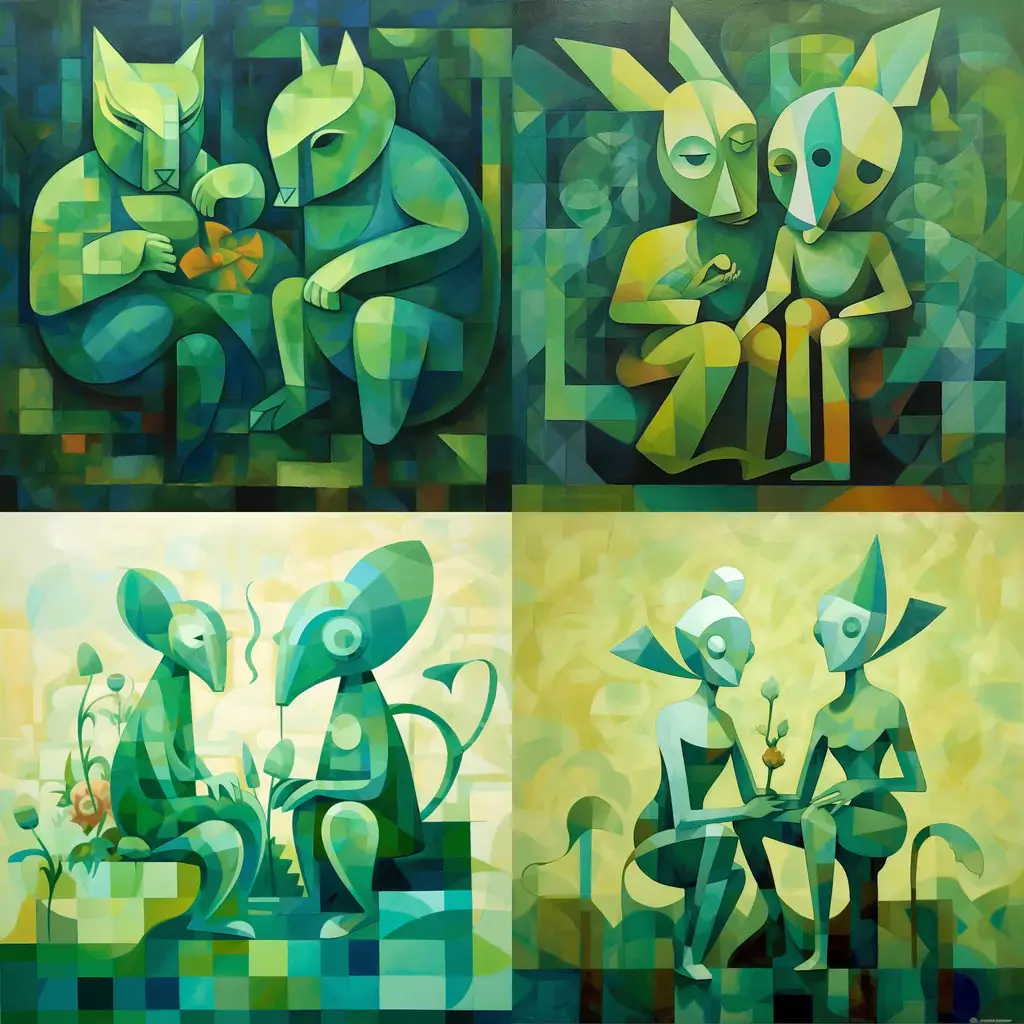
Cubism art style, pioneered by Pablo Picasso and Georges Braque, emerged in the early 20th century and revolutionized the concept of representation in art. It involves depicting subjects from multiple viewpoints, fragmenting and reassembling them in abstracted geometric forms. Cubist artworks deconstruct traditional notions of perspective, space, and form, emphasizing the two-dimensional nature of the canvas.
Carolingian
Carolingian Art art style refers to the artistic production during the Carolingian Empire, a medieval European empire in the 8th and 9th centuries. It was characterized by a revival of classical influences, elaborate manuscript illumination, intricate metalwork, and an emphasis on religious imagery. Carolingian art played a significant role in the cultural and artistic renaissance of the period.
Byzantine
Byzantine Art art style developed in the Byzantine Empire, which spanned from the 4th century to the 15th century in the eastern Mediterranean. It is characterized by its religious subject matter, rich colors, intricate details, and a focus on divine symbolism. Byzantine art often adorned churches, mosaics, icons, and illuminated manuscripts, reflecting the empire’s connection between religion and art.
Graphite
Graphite art style refers to artworks created primarily using graphite pencils or graphite powder. It emphasizes the use of shading, tonal values, and fine details to create realistic and textured drawings. Graphite art allows for precise rendering and a wide range of values, making it a popular choice for portraiture, still life, and figurative artworks.
Calligraphy
Calligraphy art style involves the creation of decorative and expressive writing using various tools such as brushes, pens, or chisels. It focuses on the beauty and rhythm of the written word, often featuring intricate letterforms, flourishes, and harmonious compositions. Calligraphy is practiced in various cultures and has been used for both artistic and functional purposes.
Crayon
Crayon art style utilizes crayons as the primary medium for creating artworks. It offers a unique and vibrant quality, characterized by bold, expressive lines and rich colors. Crayons allow for a wide range of techniques, from smooth blending to textured layering, and are often used in both traditional and contemporary art forms.
Blackboard
Blackboard art style involves creating artworks on blackboards or chalkboards. It often emulates the appearance of chalk drawings or handwritten text on a black surface. Blackboard art is commonly associated with educational settings, menu boards, or signage, and can range from playful and decorative to informative and illustrative.
Dreamcore
Dreamcore art style draws inspiration from dreams, fantasies, and ethereal worlds. It combines elements of surrealism, whimsy, and imagination to create dreamlike and otherworldly artworks. Dreamcore art often features soft pastel colors, fantastical creatures, dreamscapes, and a sense of nostalgia or escapism.
Gothpunk
Gothpunk art style blends elements of gothic aesthetics with cyberpunk influences. It combines dark, macabre themes with futuristic and dystopian elements, creating a unique visual style. Gothpunk art often features a juxtaposition of Victorian-inspired fashion, cybernetic enhancements, and a gritty, urban environment.
Fluorescence
Fluorescence art style explores the use of fluorescent or neon colors that emit a vibrant glow under ultraviolet light. It creates artworks that are visually striking and vibrant, often evoking a sense of energy, excitement, or futuristic ambiance. Fluorescent art is commonly seen in urban art, installations, and digital media.
Ektachrome
Ektachrome art style refers to the aesthetic and visual qualities reminiscent of Ektachrome film, a type of color slide film known for its vibrant and saturated colors. It often features vivid hues, high contrast, and a nostalgic, retro feel. Ektachrome art style is inspired by the characteristics of analog photography and seeks to recreate the distinctive look of this specific film stock.
Vaporwave
Vaporwave art style emerged in the internet culture of the 2010s and draws inspiration from the aesthetics of 1980s and 1990s consumerism, technology, and popular culture. It often incorporates glitch art, retro graphics, pastel colors, and references to vintage computer interfaces. Vaporwave art is characterized by a sense of nostalgia, irony, and a critique of consumerist society.
Layered Paper
Layered Paper art style involves the creation of artworks using cut-out layers of paper that are assembled to create depth, texture, and visual interest. It can range from simple collages to intricate and elaborate paper sculptures. Layered Paper art offers a unique tactile quality and allows for the exploration of composition.
Knolling
Knolling art style is a method of arranging objects in a visually pleasing and organized manner. It involves arranging items in parallel or 90-degree angles, creating a grid-like pattern. Knolling art often features everyday objects, tools, or materials arranged meticulously, showcasing orderliness and precision.
Glitch
Glitch art style embraces and celebrates digital errors, glitches, and distortions as artistic elements. It involves intentionally corrupting or manipulating digital images or videos to create unexpected and visually striking results. Glitch art often features fragmented and distorted imagery, pixelation, color shifts, and other visual anomalies.
Papercut
Papercut art style involves creating intricate designs by cutting paper using scissors or precision knives. It is a form of decorative craft that can range from simple silhouettes to complex and detailed compositions. Papercut art often showcases delicate patterns, ornamental motifs, and storytelling through the interplay of positive and negative spaces.
Necropunk
Necropunk art style combines elements of gothic aesthetics with a futuristic and post-apocalyptic setting. It explores themes of decay, death, and the macabre, often featuring dark and dystopian imagery, cybernetic enhancements, and occult symbolism. Necropunk art creates a visually haunting and atmospheric world.
Dieselpunk
Dieselpunk art style draws inspiration from the aesthetics and technology of the early 20th century, particularly the interwar period (1918-1939). It combines elements of diesel-powered machinery, retro-futurism, and noir influences. Dieselpunk art often features streamlined designs, industrial landscapes, vintage fashion, and a sense of adventure.
AtomPunk
AtomPunk art style is an artistic genre that imagines a retro-futuristic world based on the aesthetics, technology, and cultural influences of the Atomic Age (1940s-1960s). It draws inspiration from mid-century design, space exploration, atomic energy, and the optimism of the post-World War II era. AtomPunk art often features sleek, futuristic designs, atomic motifs, and a nostalgic vision of a technologically advanced society.
Funk
Funk art style emerged in the 1960s as a reaction against the seriousness and formalism of traditional art. It embraces humor, playfulness, and a bold, irreverent approach to subject matter. Funk art often incorporates found objects, assemblage, unconventional materials, and a sense of wit and satire.
Stick Figure Drawing
Stick Figure Drawing art style simplifies the human form into basic lines and shapes, representing figures as stick-like figures with minimal detail. It emphasizes gesture, movement, and simplicity in capturing the essence of a subject. Stick Figure Drawing art can be playful, expressive, and accessible to artists of all skill levels.
Biopunk
Biopunk art style explores a speculative future where biotechnology and genetic manipulation play a significant role. It combines elements of biotechnology, biology, and science fiction to create a visually distinct aesthetic. Biopunk art often features organic forms, hybrid creatures, bioengineered landscapes, and explores ethical and environmental themes.
Steampunk
Steampunk art style imagines a world where steam power and Victorian-era technology are prominent, often in a futuristic or alternate history setting. It combines elements of the Industrial Revolution, Victorian fashion, and futuristic inventions. Steampunk art often features brass and copper machinery, clockwork mechanisms, airships, and a sense of adventure and exploration.
Expressionism
Expressionism is an art style that emphasizes the artist’s subjective and emotional response to the world. It aims to convey inner emotions and experiences rather than a realistic representation of the external world. Expressionist artworks often feature bold, distorted, and exaggerated forms, vivid colors, and dynamic brushwork to evoke powerful emotions and convey a sense of inner turmoil or intensity.
Stained Glass
Stained Glass art style involves creating images or designs using colored glass pieces joined together with lead strips. It has a rich history in religious and architectural contexts, with intricate and vibrant compositions that utilize the interplay of light and color. Stained Glass art often features narrative or symbolic elements and creates a mesmerizing effect when illuminated by natural or artificial light.
Macabre
Macabre art style explores themes of death, darkness, and the grotesque. It embraces the eerie, morbid, and unsettling aspects of human existence. Macabre art often features surreal or nightmarish imagery, skeletons, skulls, and other macabre symbols, evoking a sense of unease or fascination with the darker side of life.
Installation Art
Installation art style refers to artworks that are created or assembled within a specific space, often transforming the environment and engaging the viewer’s senses. It goes beyond traditional art forms and incorporates various media such as sculptures, objects, sound, light, and technology. Installation art encourages audience interaction and can evoke specific emotions, ideas, or experiences within the immersive environment it creates.
Futuresynth
Futuresynth art style draws inspiration from the aesthetics and sounds of retro-futurism, particularly the electronic music genre called synthwave. It combines elements of 1980s nostalgia, science fiction, neon colors, and futuristic imagery. Futuresynth art often features sleek, futuristic cityscapes, glowing grids, and a sense of nostalgia for a technologically advanced future that never came to be.
Dragon Ball Z
Dragon Ball Z art style is a distinctive manga and anime art style associated with the popular Dragon Ball Z series. It features highly dynamic and exaggerated character designs, intense action sequences, vibrant colors, and a fusion of science fiction, fantasy, and martial arts themes. Dragon Ball Z art style has had a significant impact on the world of manga and anime, inspiring many artists and fans worldwide.
Simpsons
Simpsons art style refers to the unique visual style of the animated TV show “The Simpsons.” It features a distinctive cartoonish aesthetic with exaggerated character designs, bold colors, and simple yet expressive facial expressions. The Simpsons art style has become iconic and recognizable, influencing both animation and popular culture.
WeirdCore
WeirdCore art style is a multimedia art form that combines elements of surrealism, glitch art, psychedelia, and pop culture references. It often features distorted and unsettling imagery, unexpected juxtapositions, and a sense of the bizarre and otherworldly. WeirdCore art seeks to challenge traditional notions of reality and aesthetics, creating a visually striking and thought-provoking experience.
Lunar Punk
Lunar Punk art style imagines a futuristic society set on the Moon or in a lunar colony. It combines elements of science fiction, cyberpunk, and lunar landscapes to create a unique visual aesthetic. Lunar Punk art often features futuristic cityscapes, advanced technology, lunar motifs, and a sense of exploration and adventure in a lunar setting
Astropunk
Astropunk art style blends elements of science fiction, space exploration, and punk subculture. It envisions a future where punk ideologies and aesthetics exist in a cosmic setting. Astropunk art often features futuristic punk fashion, space travel, celestial motifs, and a rebellious spirit that challenges the norms of both society and the universe.
Chinoiserie
Chinoiserie art style refers to the European artistic interpretation of Chinese and East Asian aesthetics. It emerged in the 17th and 18th centuries and often featured elaborate and fanciful designs inspired by Chinese art, culture, and motifs. Chinoiserie art includes decorative arts, furniture, ceramics, textiles, and wallpaper, incorporating elements such as pagodas, dragons, floral patterns, and scenes of Chinese daily life.
Tron
Tron art style draws inspiration from the science fiction film “Tron” released in 1982. It is characterized by a futuristic and neon-lit aesthetic, featuring sleek and glowing digital landscapes, illuminated grids, and high-tech imagery. Tron art often explores the relationship between humans and technology, blurring the boundaries between the virtual and physical worlds.
Kodak Colorplus 200
Kodak Colorplus 200 art style refers to the visual characteristics and color palette associated with the Kodak Colorplus 200 film. It is known for its vibrant and natural colors, suitable for a wide range of photography genres. The Kodak Colorplus 200 art style often exhibits a nostalgic and filmic quality, capturing moments with warmth and richness.
Fujifilm Velvia 50
Fujifilm Velvia 50 art style is inspired by the distinctive look of the Fujifilm Velvia 50 slide film. It is renowned for its high saturation, rich contrast, and fine grain, particularly enhancing landscapes, nature, and vibrant scenes. The Fujifilm Velvia 50 art style often showcases vivid and intensified colors, creating a visually impactful and immersive experience.
Quilt Art
Quilt Art art style refers to the practice of creating artworks using fabric and stitching techniques commonly associated with quilting. Quilt art combines elements of traditional quilting with contemporary artistic expression, often exploring themes of identity, memory, and storytelling. Quilt Art pieces feature intricate patterns, textures, and layers, showcasing the skillful craftsmanship and creative vision of the artist.
Isometric View
Isometric View art style depicts three-dimensional objects or scenes using an isometric projection, where all three axes are equally foreshortened. It creates a sense of depth and perspective without the distortion of vanishing points. Isometric View art often features architectural or industrial subjects, showcasing precise geometric forms, clean lines, and a stylized representation of space.
Jade Carving
Jade Carving art style refers to the intricate and delicate art of sculpting jade, a precious gemstone. It has a long history in various cultures, particularly in East Asia, where jade is highly revered. Jade Carving art showcases meticulous craftsmanship, intricate detailing, and a harmonious balance between the natural properties of the stone and the artistic vision of the sculptor.
Watercolor Ornamental
Watercolor Ornamental art style utilizes the translucent and fluid nature of watercolor paint to create ornate and decorative artworks. It often incorporates intricate patterns, floral motifs, and organic forms, showcasing the delicate blending of colors and the expressive qualities of watercolor pigments. Watercolor Ornamental art pieces evoke a sense of elegance, beauty, and whimsy.
Japanese Ink Painting
Japanese Ink Painting, also known as Sumi-e or Suibokuga, is a traditional East Asian art style that involves using ink and brush to create monochromatic artworks. It emphasizes simplicity, spontaneity, and the mastery of brush techniques. Japanese Ink Painting often focuses on subjects such as landscapes, nature, calligraphy, and Zen Buddhism, capturing the essence of the subject with minimal strokes and a harmonious balance of light and dark.
Illustrator
Illustrator art style refers to the artistic approach of creating visual representations, often for commercial purposes or storytelling. It involves using various techniques and mediums, such as drawing, painting, or digital tools, to bring ideas, concepts, or narratives to life visually. Illustrator art style encompasses a wide range of artistic expressions, including children’s book illustrations, editorial illustrations, character design, and concept art.
Laser Path
Laser Path art style explores the creative potential of laser technology as a medium for artistic expression. It involves using lasers to create precise lines, shapes, and patterns on different surfaces, such as wood, metal, or paper. Laser Path art often combines digital design software with laser cutting or engraving techniques to produce intricate and detailed artworks with a futuristic and technologically advanced aesthetic.
Helix
Helix art style draws inspiration from the geometric form of a helix, which resembles a spiral or a coil. It often incorporates spiral motifs, curved lines, and dynamic compositions to create visually engaging artworks. Helix art can be represented in various mediums, including sculpture, painting, digital art, or installations. It explores concepts of movement, transformation, and the interplay between order and chaos.
Corrugation
Corrugation art style involves exploring the aesthetic possibilities of corrugated materials, such as corrugated cardboard or metal sheets. It utilizes the repetitive ridges and valleys of the corrugated texture to create visual interest and unique surface patterns. Corrugation art often combines techniques like cutting, folding, or manipulating the material to create three-dimensional sculptures, installations, or textured surfaces.
Cartoon
Cartoon art style refers to the stylized and exaggerated depiction of characters, often with simplified forms and bold outlines. It is characterized by its humorous and whimsical nature, incorporating elements of comedy, satire, or storytelling. Cartoon art can be found in various mediums, including comic strips, animated films, children’s books, and illustrations. It often employs vibrant colors, expressive facial features, and dynamic poses to convey emotions and narratives.
Deconstructivism
Deconstructivism art style is an architectural and design movement that challenges traditional ideas of structure, form, and spatial relationships. It often involves fragmented and distorted geometries, non-rectilinear shapes, and a sense of disorientation. Deconstructivism seeks to break down and question conventional design principles, exploring ideas of chaos, fragmentation, and the interplay between architecture and perception.
Magic Realism
Magic Realism art style combines realistic elements with magical or surreal elements, creating a sense of wonder and mystery within everyday settings. It often depicts ordinary scenes or objects infused with elements of fantasy, mythology, or dreamlike imagery. Magic Realism art blurs the boundaries between reality and imagination, inviting viewers to explore different layers of meaning and symbolism.
Hyperrealism
Hyperrealism art style aims to create artworks that are incredibly detailed and lifelike, often resembling high-resolution photographs. It involves meticulous attention to detail, precision in capturing light, shadow, and texture, and an emphasis on rendering subjects with extreme accuracy.
Graffiti
Graffiti art style is a form of visual expression that involves creating art in public spaces using various techniques such as spray paint, stencils, stickers, and markers. It emerged as a subculture and a means of self-expression, often addressing social and political issues. Graffiti art can range from simple tags to elaborate murals, showcasing the artist’s unique style, lettering, and imagery.
Organic
Organic art style takes inspiration from natural forms, patterns, and structures found in the living world. It embraces flowing lines, curves, and biomorphic shapes to create artworks that evoke a sense of harmony and interconnectedness. Organic art often explores themes related to nature, growth, and the relationship between humans and the environment.
Opitcal Art
Opitcal Art, also known as Op Art, is a style of visual art that plays with optical illusions and perceptual effects to create dynamic and engaging artworks. It employs geometric patterns, contrasting colors, and precise arrangements of lines or shapes to create the illusion of movement or three-dimensionality. Opitcal Art often captivates viewers’ attention and challenges their perception, inviting them to explore the interaction between art and vision.
Religious Icon
Religious Icon art style refers to the depiction of sacred figures or religious themes in a highly stylized and symbolic manner. It has its roots in religious traditions, particularly in Eastern Orthodox Christianity, where icons are considered sacred objects of veneration. Religious Icon art often follows strict conventions regarding composition, color symbolism, and facial expressions, aiming to convey spiritual meaning and invoke a sense of reverence.
Oil Paint
Oil Paint art style utilizes oil-based paints as the primary medium for creating artworks. Oil paint offers a versatile range of colors, textures, and techniques, allowing artists to achieve rich, luminous, and layered effects. It has been a prominent medium in the history of Western art, used by renowned artists to create realistic, impressionistic, or abstract paintings with a wide range of expressive possibilities.
Alcohol Ink
Alcohol Ink art style involves using alcohol-based pigments to create vibrant and fluid artworks. The inks are applied to non-porous surfaces such as Yupo paper, ceramic tiles, or synthetic materials, creating abstract patterns and colorful compositions. Alcohol Ink art allows for experimental and unpredictable effects, as the inks interact and blend in unique ways, resulting in dynamic and expressive artworks.
Iridescent
Iridescent art style explores the shimmering and color-shifting properties of iridescent materials, such as iridescent paints, pigments, or reflective surfaces. It creates artworks that change appearance depending on the viewing angle or the play of light. Iridescent art often incorporates metallic or pearlescent effects, adding a sense of magic, depth, and visual intrigue to the artwork.
Diagrammatic Drawing
Diagrammatic Drawing art style involves the use of simplified diagrams, charts, or visual representations to convey information, concepts, or processes visually. It focuses on clarity, precision, and the efficient communication of complex ideas through graphic elements, symbols, and minimalistic designs.
Expressionism
Expressionism art style emerged in the early 20th century as a reaction against the perceived superficiality of society and the traditional art forms. It emphasizes the emotional and psychological expression of the artist, often using distorted or exaggerated forms, bold colors, and vigorous brushwork. Expressionist artworks aim to evoke strong emotional responses and convey the inner turmoil, anxieties, or aspirations of the human experience.
Funny pop
Funny pop art style is a lighthearted and playful approach to the pop art movement. It incorporates humor, wit, and satire into the depiction of popular culture icons, consumer products, or everyday objects. Funny pop art often employs vibrant colors, bold outlines, and comic-like elements to create visually engaging and amusing artworks that comment on the contemporary social and cultural landscape.
Digital Art
Digital Art art style refers to artworks created using digital technology and tools such as computer software, graphic tablets, or digital cameras. It encompasses a wide range of artistic practices, including digital painting, photo manipulation, 3D modeling, and interactive installations. Digital Art offers artists new possibilities for experimentation, collaboration, and the integration of technology into their creative process, resulting in diverse and innovative artworks.
Pnfuturism
Pnfuturism art style, also known as Post-New Futurism, is a contemporary artistic movement that combines elements of futurism, technology, and post-modern aesthetics. It explores the intersection between the past, present, and future, often incorporating retro-futuristic imagery, science fiction themes, and cultural references. Pnfuturism embraces a sense of nostalgia while simultaneously imagining alternative futures, challenging traditional notions of time and progress.
Supermatism
Supermatism art style is a non-objective artistic movement that emerged in the early 20th century, primarily associated with the Russian artist Kazimir Malevich. It emphasizes the use of basic geometric forms, particularly the square, rectangle, and circle, in a pure and abstract manner. Supermatist artworks aim to evoke a sense of spirituality, simplicity, and the liberation of art from representational constraints, focusing on the pure expression of form and color.
Synthwave
Synthwave art style draws inspiration from the aesthetics of the 1980s, particularly the visual and musical style associated with retrofuturism and electronic music. It often incorporates neon colors, geometric shapes, futuristic cityscapes, and nostalgic references to video games, sci-fi movies, and vintage technology. Synthwave art creates a nostalgic and dreamy atmosphere, capturing the spirit of an imagined future from the past.
90s commercial
90s commercial art style refers to the visual style prevalent in commercial advertisements, graphic design, and popular culture during the 1990s. It is characterized by bold and vibrant colors, geometric patterns, abstract shapes, and the use of typography in a playful and eye-catching manner. 90s commercial art style reflects the energetic and consumer-driven culture of the decade, often evoking a sense of nostalgia for those who grew up during that time.
Gradient
Gradient Art art style explores the use of smooth color transitions or gradients as the primary visual element in artworks. It often employs vibrant or subtle color combinations, creating a sense of depth, movement, and visual harmony. Gradient Art can be found in various mediums, including digital art, painting, graphic design, and installations, offering artists a versatile tool to express mood, atmosphere, and visual transitions.
Golden Hour
Golden Hour art refers to artwork that captures the magical and warm lighting conditions that occur during the early morning or late afternoon. It often emphasizes the soft, golden hues and creates a dreamy and enchanting atmosphere that enhances the beauty of the subject matter.
So did You Create Any Amazing Art Pieces?
So did you manage to create any amazing art pieces? If you do why not head over to our reddit page and share some of your work, we would love to see it!
























